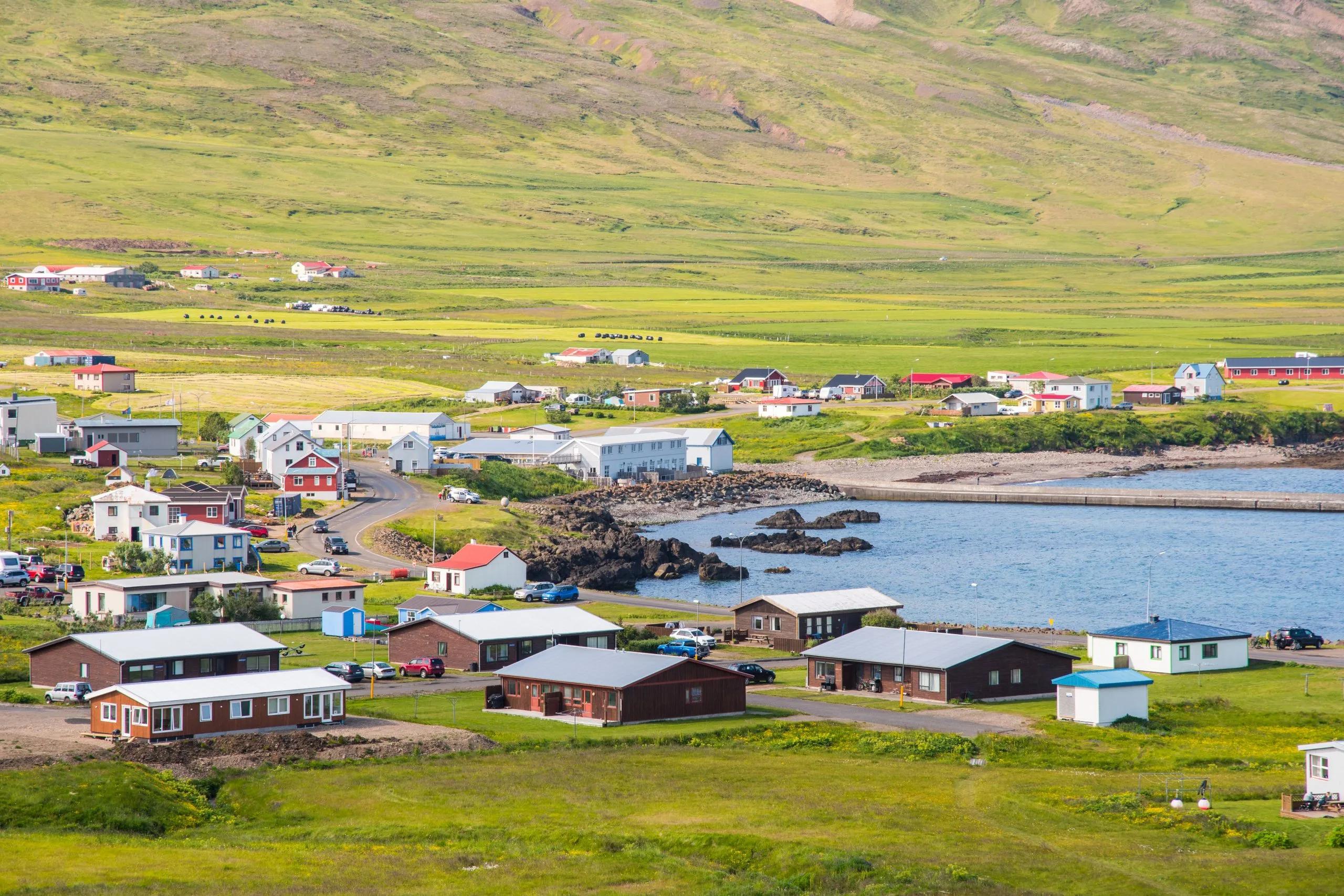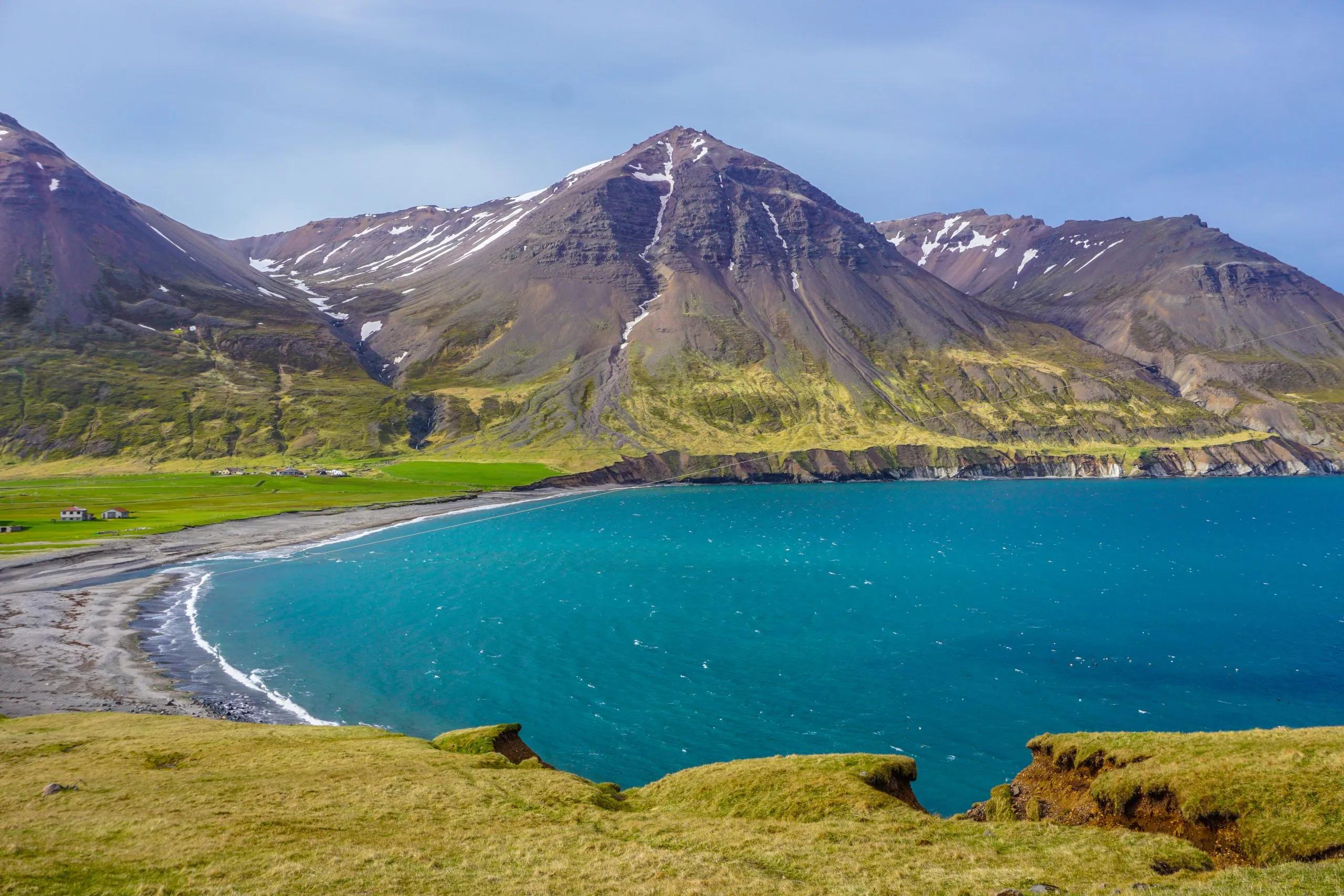13.3 km and 860 m of elevation gain/loss













Víknaslóðir Trail
4 days / 3 nights
|
Starting point
Borgarfjörður Eystri
Finish point
Seyðisfjörður
Season
From July to September
Technical level
2/5
Fitness level
3/5
Tour type
Hut-to-Hut
Starting point
Borgarfjörður Eystri
Finish point
Seyðisfjörður
Season
From July to September
Technical level
2/5
Fitness level
3/5
Tour type
Hut-to-Hut
Highlights
- Traverse a landscape that shifts from lush valleys to stark mountains, offering a visual feast at every turn
- Spot a variety of wildlife, including the chance to see puffins and the elusive Arctic fox
- Walk through history with ruins of ancient farms and abandoned settlements dotting the trail
- Experience the authentic wilderness lifestyle in self-serviced huts
- Enjoy moments of unparalleled solitude, away from the crowds
- End each day with breathtaking views, whether it’s a sunset over a fjord or the northern lights dancing in the sky
Itinerary of the trip
FREE ITINERARY
Get Your Travel Itinerary
Loved the itinerary? Enter your email below, and we'll send a copy straight to your inbox.
What’s included in the price?
Self-guided
NOT INCLUDED
OPTIONAL EXTRAS
What to bring to the tour
- Hiking shoes/boots
- 25 to 45-liter backpack
- Base layer
- Sports T-shirts
- Hiking shorts
- Hiking water-repellent pants
- Waterproof jacket
- Midlayer
- Sports socks and underwear
- Leisurewear for evenings
- Down jacket
- Gloves
- Shade hat/cap
- Warm headwear
- Sunscreen
- Sunglasses
- Headlamp
- Hiking poles
- ID card or passport
- Snacks
- Cash
- Water bottles or hydration pack
- Sleeping liner
- Toiletries
- Toilet paper
- Small first aid kit
As you traverse Víknaslóðir Trail, you'll be greeted by the diverse flora and fauna of the region, including the elusive Arctic fox and numerous bird species that make their home along the coastline and in the valleys.
Each day's hike offers its own unique landscape, from the stark beauty of deserted inlets to the surprising hues of the mountain ridges painted in shades of red, orange, and green.
The well-marked trails lead you through areas rich in history, where abandoned farms and ruins whisper tales of Iceland's past, offering a glimpse into the lives of those who once called these remote fjords home.
This trek is an invitation to those ready to step out of their comfort zones. While not technically or physically demanding, the Víknaslóðir Trail's remote paths appeal to the adventurous at heart.
As you traverse the landscapes, each night's rest in Iceland’s self-serviced huts promises a true back-to-nature experience. While these huts offer basic cooking and sleeping facilities, hikers have to carry their own food, cooking equipment, and sleeping bags.
We understand that adventure comes with its uncertainties, which is why we're here to provide a seamless experience. When you embark on the self-guided Víknaslóðir Trail with us, we book your accommodations in the self-serviced huts, ensuring you have a spot to rest.
Additionally, we provide a personalized travel booklet with GPS navigation to guide your steps, which is essential in the Icelandic wilderness. Our round-the-clock support and expert guidance are at your disposal, ready to solve any logistical issues and enhance your journey through the East Fjords.
Let the Víknaslóðir Trail be your gateway to an adventure that transcends the ordinary. Step into the wild, embrace the elements and discover the untamed heart of Iceland with us.
Frequently Asked Questions
Ratings & Reviews

5.0 average rating

We had a lovely hike today with our guide Klemen. He personalized the tour on our needs and interests, so that we saw places we wouldn't without his experience. The hike was a little bit slippery after the rain from the last days and it went a lot upwards, but it was totally worth it! Thanks again :)


We were really glad to have booked a self-guided tour through Hut to Hut. It was a very easy process, the maps, trip notes and the responsiveness of the team was excellent. Highly recommended! We have never done anything like this before and felt safe the whole time!
We had a lovely hike today with our guide Klemen. He personalized the tour on our needs and interests, so that we saw places we wouldn't without his experience. The hike was a little bit slippery after the rain from the last days and it went a lot upwards, but it was totally worth it! Thanks again :)


We were really glad to have booked a self-guided tour through Hut to Hut. It was a very easy process, the maps, trip notes and the responsiveness of the team was excellent. Highly recommended! We have never done anything like this before and felt safe the whole time!
All available guidance options
Self-guided
Are you looking for a good adventure and limitless flexibility? Then you should try out a self-guided tour, perfect for independent explorers who want to set their own pace. Without the need to stick to a group schedule, you’re free to linger at scenic viewpoints while the logistics are taken care of in advance.

HASSLE FREE
We handle itineraries, accommodations, and anything else you prefer not to deal with, so you can enjoy a carefree hike.

BOOK WITH CONFIDENCE
We are a financially protected company, fully bonded and insured, keeping your money safe and allowing you to travel with confidence.

TRIED & TESTED ADVENTURES
Only the best hut to hut hikes in the USA, cherry-picked by our local team with an in-depth knowledge of the region.

UNBEATABLE SUPPORT
Our 24/7 customer support is where we show our passion, bringing you a better experience by making your well-being our number one priority.


























